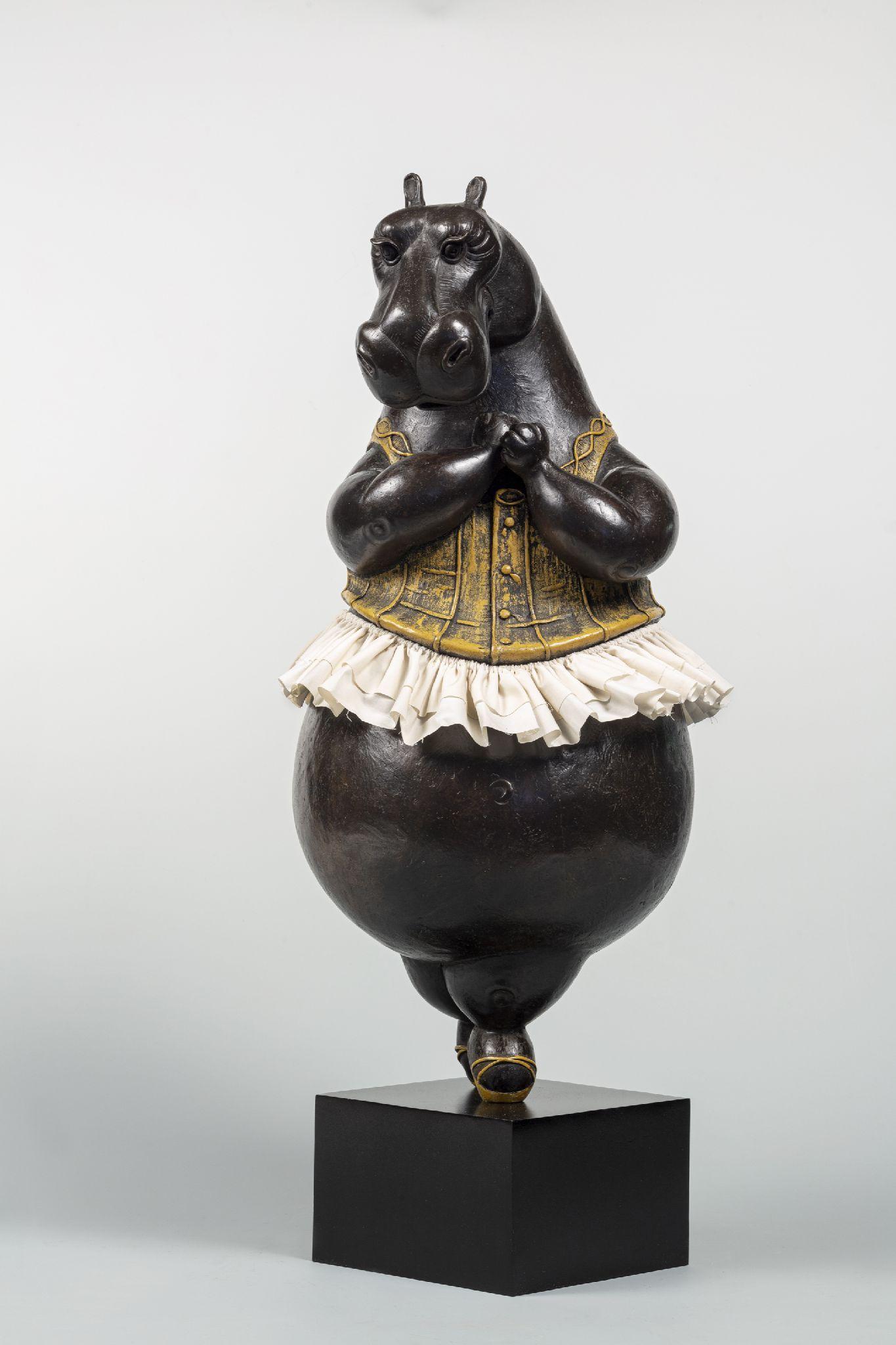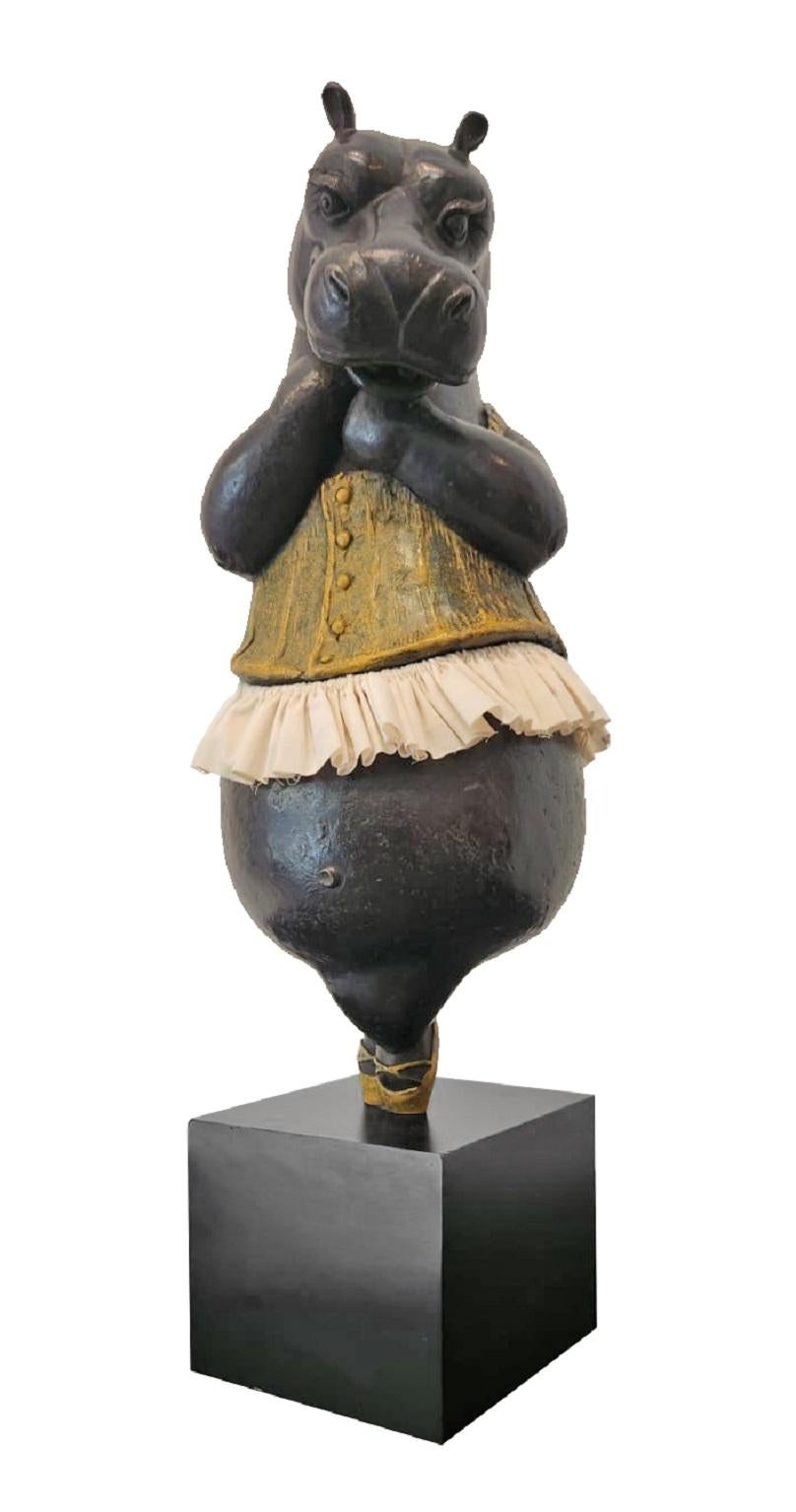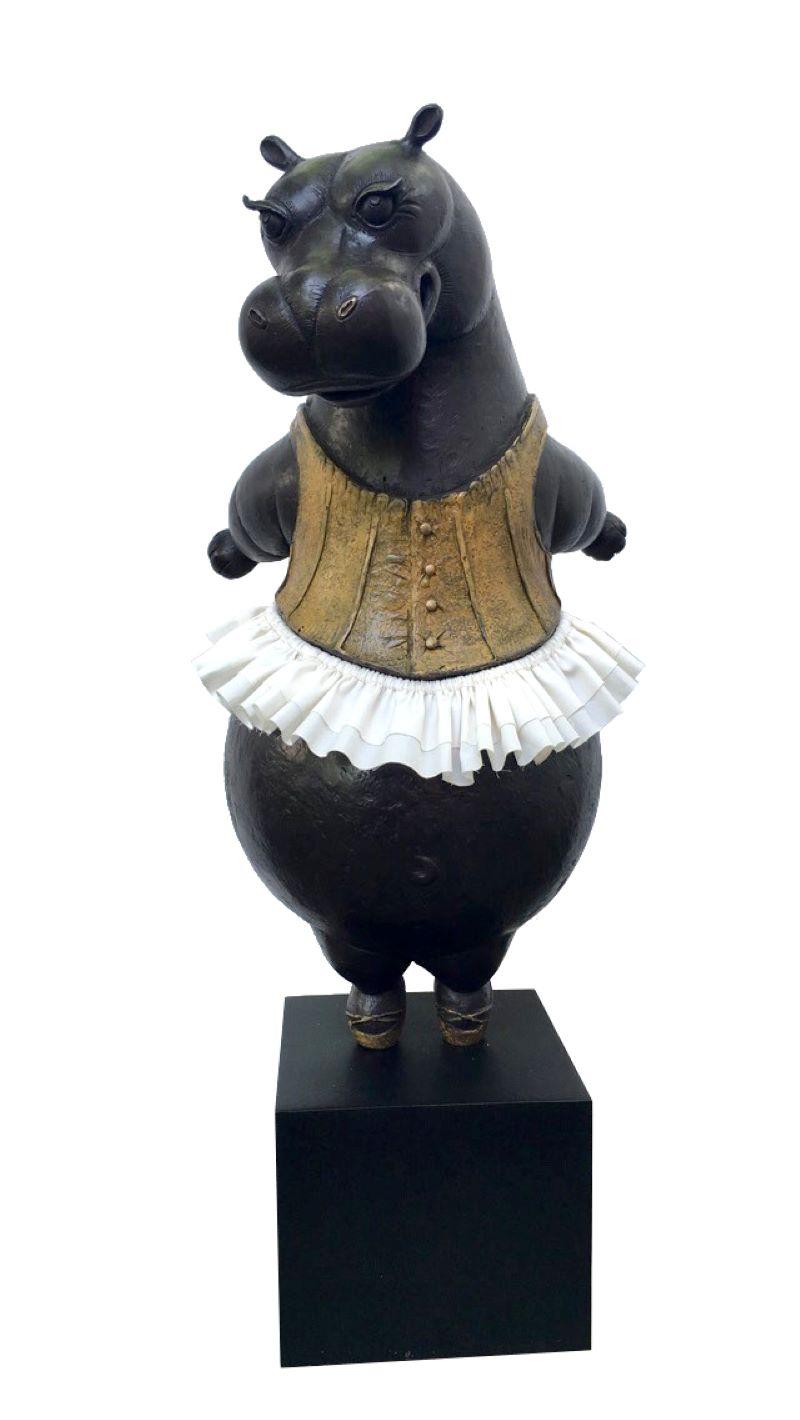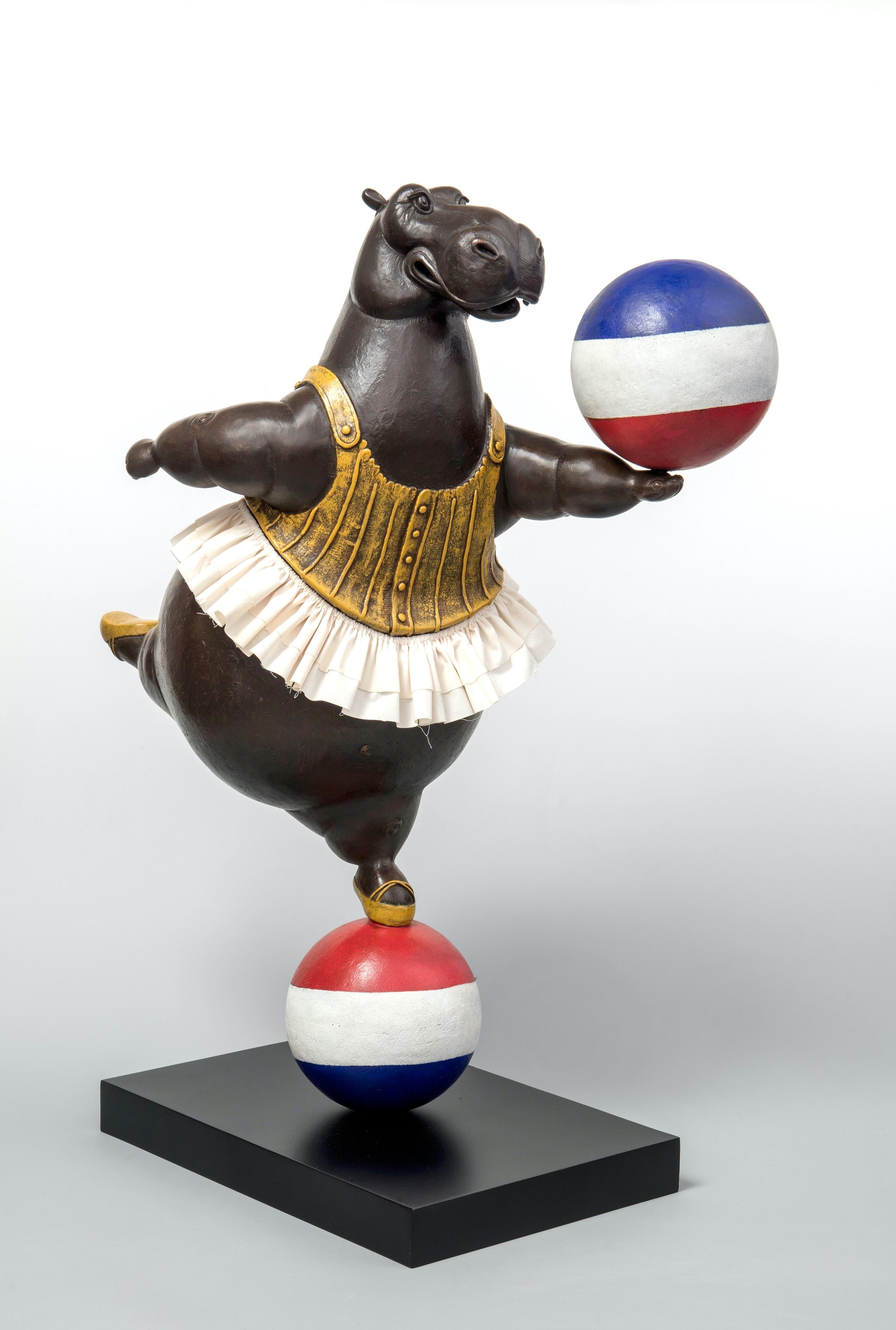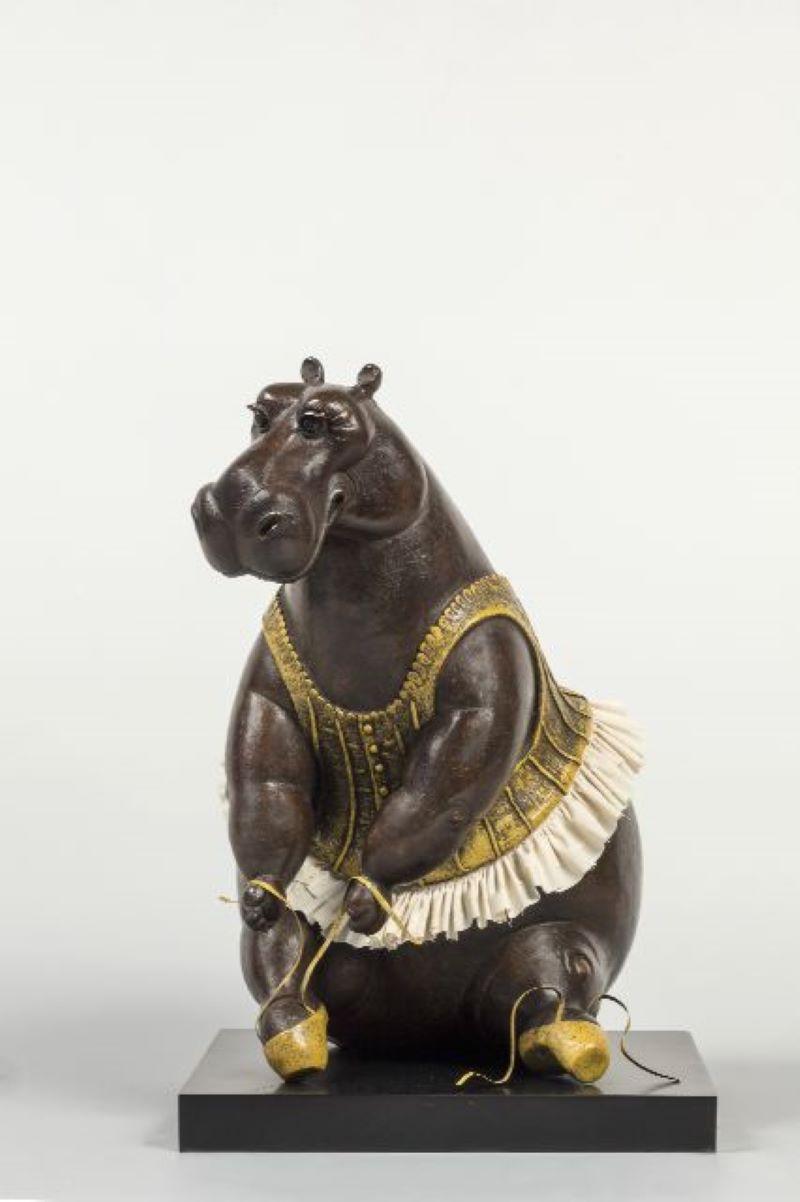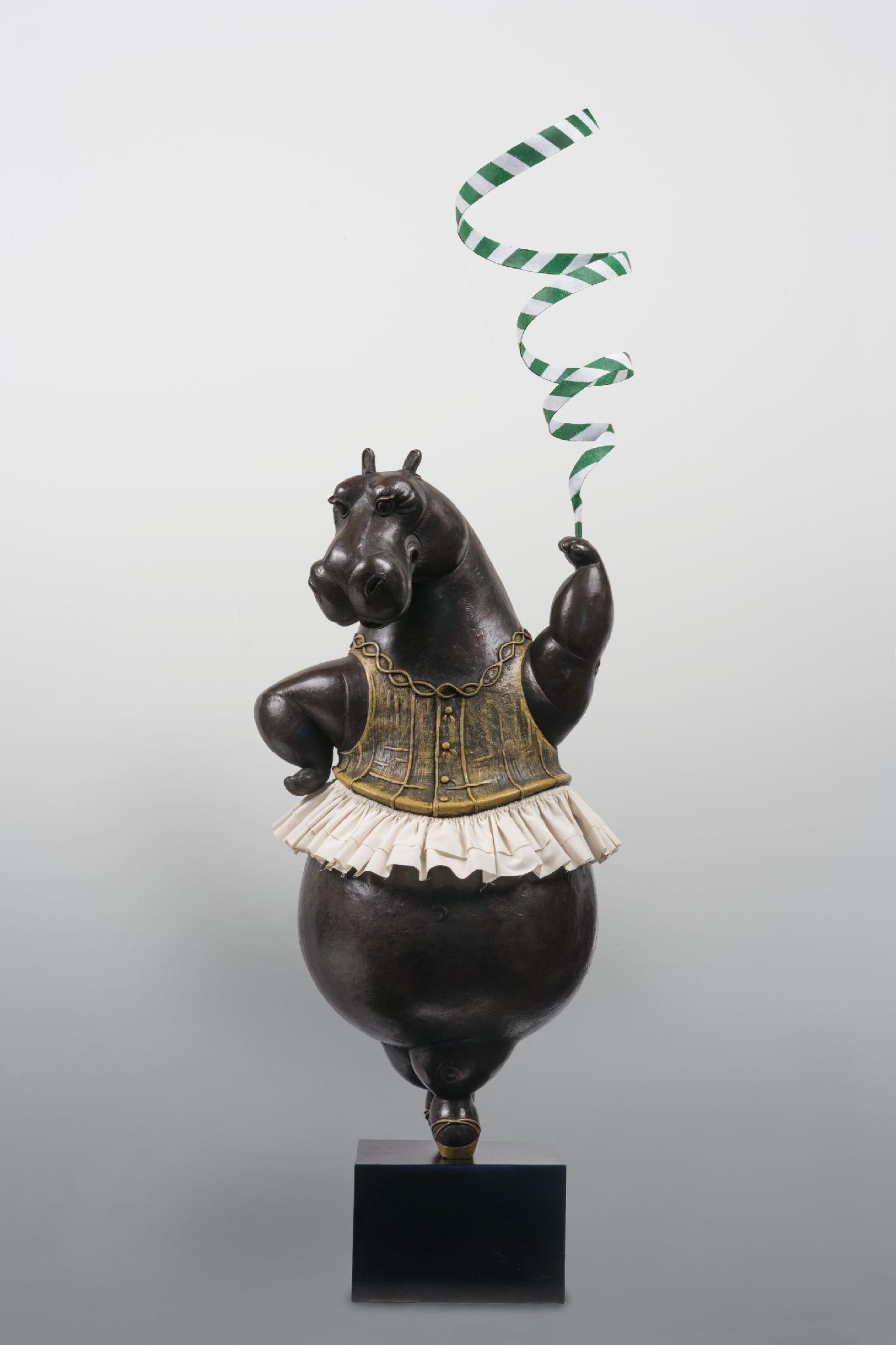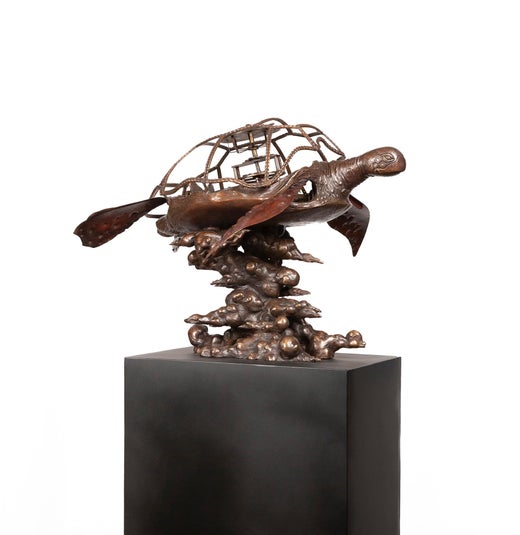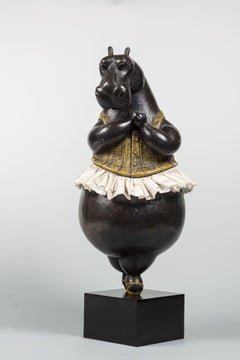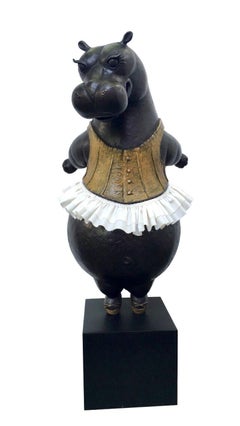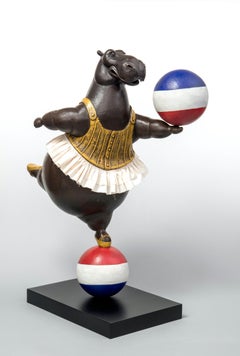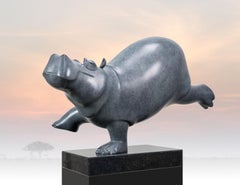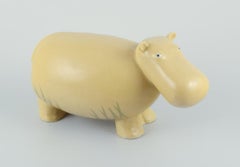Bjørn Okholm SkaarupHippo Ballerina, pirouette II2020
2020
About the Item
- Creator:
- Creation Year:2020
- Dimensions:Height: 23 in (58.42 cm)Width: 20 in (50.8 cm)Depth: 16 in (40.64 cm)
- Medium:
- Movement & Style:
- Period:
- Condition:
- Gallery Location:Greenwich, CT
- Reference Number:Seller: BS2008051stDibs: LU1816652062
Bjørn Okholm Skaarup
Illustrator and sculptor Bjørn Okholm Skaarup brings vibrant life to his contemporary art through a parade of joyfully imaginative animalistic figures. These creatures are often depicted in anthropomorphic poses, such as a cheetah riding a scooter or a rhino dressed as a harlequin.
Okholm Skaarup was born in 1973 in Rudkøbing, Denmark. In 1994, he began working at the National Museum of Denmark in Copenhagen. In 2004, he moved to Florence, Italy, to study the work of the Renaissance masters and learn large-scale bronze casting. He received a PhD in 2009 from the European University Institute.
Now based in New York City, Okholm Skaarup builds on elements of art history in his work, as seen in his numerous renditions of the Hippo Ballerina, which is a whimsical take on Edgar Degas’s The Little Fourteen-Year-Old Dancer with an enthusiastic nod to Disney. Many of his artworks contain a mischievous twist, like his bronze sculpture of a lion with a crown on his head, riding a rocking horse instead of a majestic stallion.
Okholm Skaarup is a member of the Royal British Society of Sculptors and has exhibited his works at many notable venues, including the Koldinghus Museum in Kolding, Denmark, the Bruce Museum in Greenwich, Connecticut, the Four Seasons Hotel in Florence and the Hotel Cipriani in Venice.
On 1stDibs, find authentic Bjørn Okholm Skaarup sculptures, prints and paintings.
- ShippingRetrieving quote...Shipping from: Palm Beach, FL
- Return Policy
More From This Seller
View All2010s Contemporary Figurative Sculptures
Bronze
2010s Contemporary Figurative Sculptures
Bronze
2010s Figurative Sculptures
Bronze
2010s Contemporary Figurative Sculptures
Bronze
2010s Figurative Sculptures
Bronze
2010s Contemporary Figurative Sculptures
Bronze, Steel
You May Also Like
2010s Contemporary Figurative Sculptures
Bronze
Vintage 1970s Swedish Scandinavian Modern Animal Sculptures
Ceramic
21st Century and Contemporary Realist Figurative Sculptures
Bronze
21st Century and Contemporary Realist Figurative Sculptures
Bronze
Late 20th Century American Animal Sculptures
Bronze
2010s Modern Figurative Sculptures
Bronze
